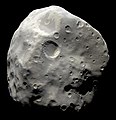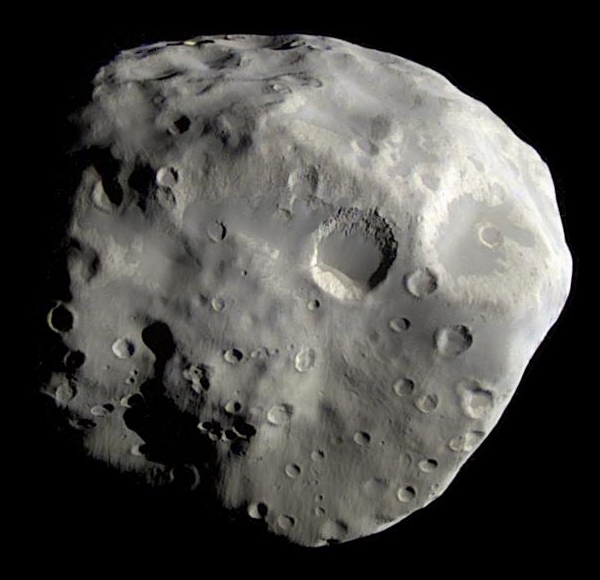Slika:PIA09813 Epimetheus S. polar region.jpg
PIA09813_Epimetheus_S._polar_region.jpg (600 × 580 točk, velikost datoteke: 153 KB, MIME-vrsta: image/jpeg)
Zgodovina datoteke
Kliknite datum in čas za ogled datoteke, ki je bila takrat naložena.
| Datum in čas | Sličica | Velikost | Uporabnik | Komentar | |
|---|---|---|---|---|---|
| trenutno | 00:49, 6. januar 2013 |  | 600 × 580 (153 KB) | Antonsusi | Turn back ok, but the margin makes only a smaller, not optimised visible size of the object on pages. |
| 09:59, 19. december 2012 |  | 680 × 640 (222 KB) | WolfmanSF | Reverted to version as of 17:18, 11 January 2008 - Solar System objects are normally portrayed with north up, which means solar illumination comes from the side; also, there's no artistic advantage to eliminating the margin | |
| 04:39, 9. januar 2011 |  | 580 × 600 (146 KB) | Antonsusi | cropped, turned upright | |
| 19:18, 11. januar 2008 |  | 680 × 640 (222 KB) | WolfmanSF | replace with processed NASA image |
Uporaba datoteke
Datoteka ni del nobene strani slovenske Wikipedije.
Globalna uporaba datoteke
To datoteko uporabljajo tudi naslednji vikiji:
- Uporaba na af.wikipedia.org
- Uporaba na als.wikipedia.org
- Uporaba na ar.wikipedia.org
- Uporaba na ary.wikipedia.org
- Uporaba na arz.wikipedia.org
- Uporaba na ast.wikipedia.org
- Uporaba na as.wikipedia.org
- Uporaba na be.wikipedia.org
- Uporaba na bh.wikipedia.org
- Uporaba na bs.wikipedia.org
- Uporaba na ca.wikipedia.org
- Uporaba na ckb.wikipedia.org
- Uporaba na de.wikipedia.org
- Uporaba na el.wikipedia.org
- Uporaba na en.wikipedia.org
- Cassini–Huygens
- Epimetheus (moon)
- Wikipedia:Selected anniversaries/December 18
- Timeline of discovery of Solar System planets and their moons
- Moons of Saturn
- List of Solar System objects by size
- Naming of moons
- List of natural satellites
- User:Dabomb87/Sandbox
- Talk:Solar System/Archive 7
- Wikipedia:Main Page history/2012 December 18
Oglejte si globalno uporabo te datoteke.




